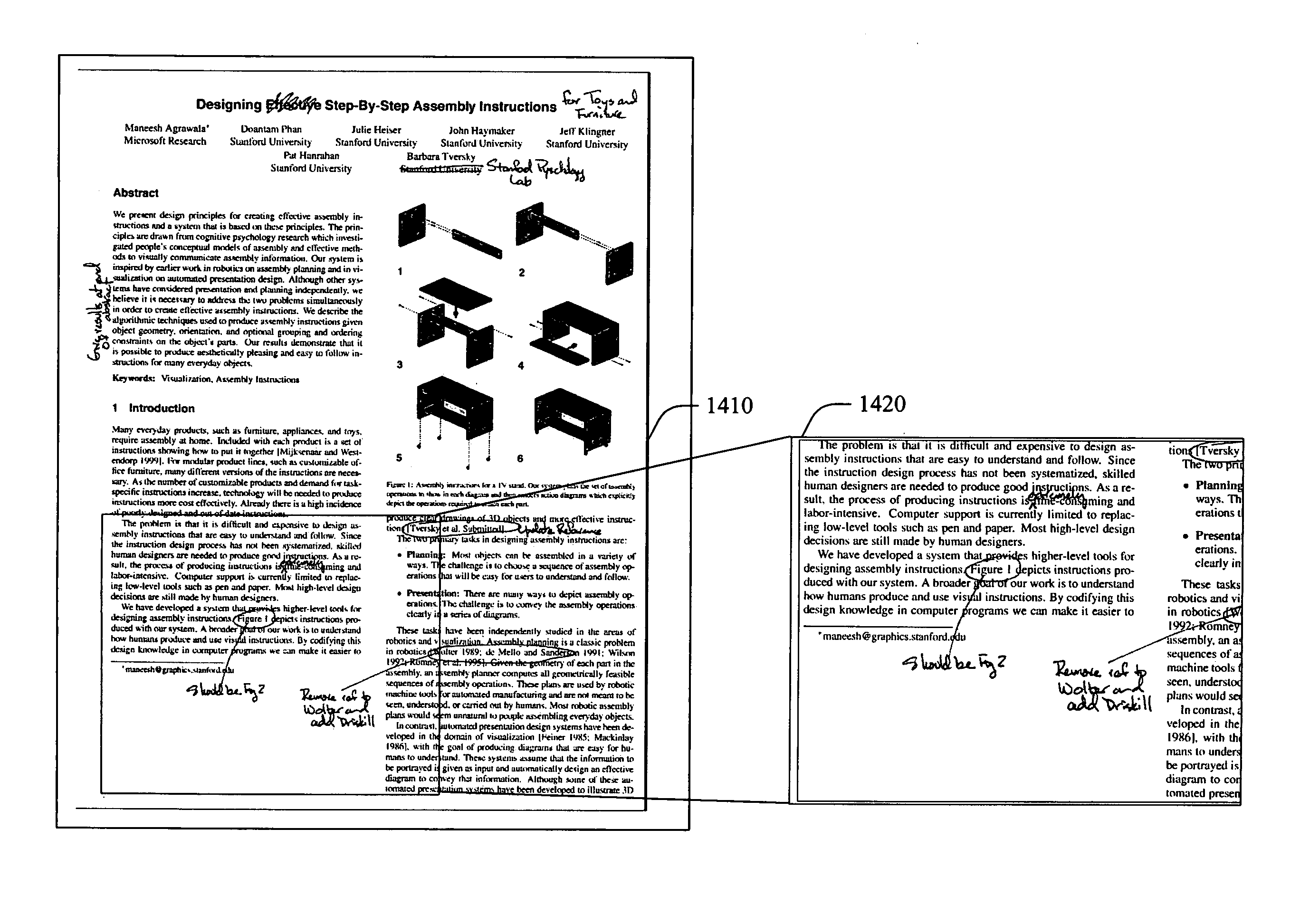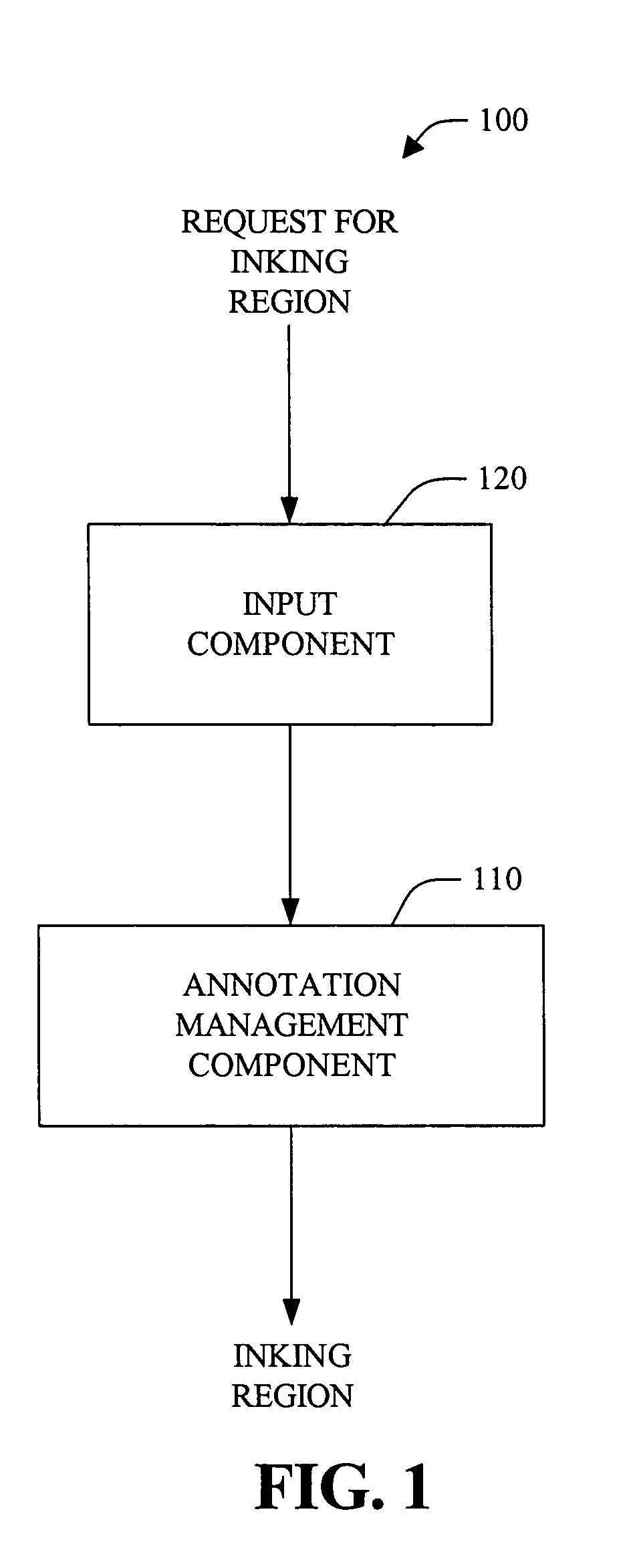Systems and methods that utilize a dynamic digital zooming interface in connection with digital inking
a dynamic digital zooming and digital zooming technology, applied in the field of digital document annotation, can solve the problems of difficult to fully achieve this goal, devices and screens that are often smaller than standard letter-size paper, and are difficult to position and interact, etc., to facilitate multi-scale navigation, quick and easy digital document annotation, scaled to the device display
- Summary
- Abstract
- Description
- Claims
- Application Information
AI Technical Summary
Benefits of technology
Problems solved by technology
Method used
Image
Examples
Embodiment Construction
[0035]The present invention provides systems and methods that facilitate annotating digital documents (e.g., word processing documents, images, etc.) displayed by microprocessor-based devices such as desktop computers, Tablet PCs, PDAs, cell phones, and the like. The systems and methods provide a focus plus context-based interface that enables multi-scale navigation during document annotation. This interface zooms a region of an underlying document, wherein a user can enter annotations in the region at a size comfortable to the user and suitably scaled to the device display.
[0036]In addition, the zoom interface is fluidly placed and adjusted with respect to the underlying document and the user's writing tool via various scale-space framework-based techniques, wherein the zoom region can automatically adjust in location, size, and shape, for example, while the user annotates in order to provide an experience that resembles annotating physical paper. When the zoom region scales back t...
PUM
 Login to View More
Login to View More Abstract
Description
Claims
Application Information
 Login to View More
Login to View More - R&D
- Intellectual Property
- Life Sciences
- Materials
- Tech Scout
- Unparalleled Data Quality
- Higher Quality Content
- 60% Fewer Hallucinations
Browse by: Latest US Patents, China's latest patents, Technical Efficacy Thesaurus, Application Domain, Technology Topic, Popular Technical Reports.
© 2025 PatSnap. All rights reserved.Legal|Privacy policy|Modern Slavery Act Transparency Statement|Sitemap|About US| Contact US: help@patsnap.com



